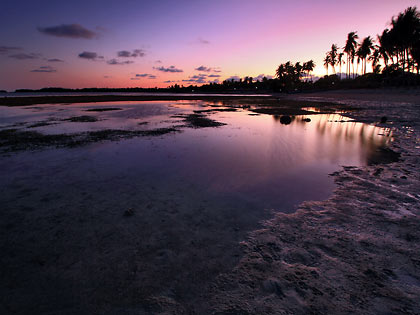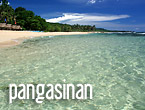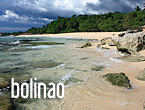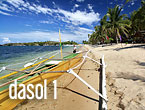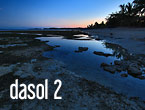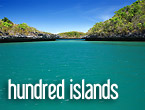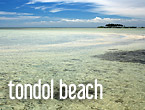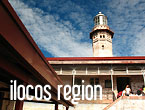Pangasinan
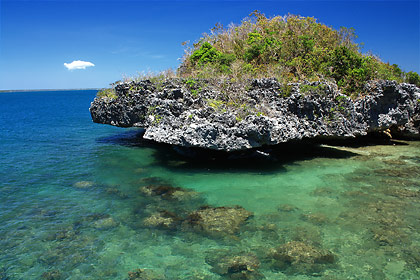
In our elementary school days Pangasinan was associated with one tourist spot: the Hundred Islands National Park in Alaminos. It is also associated with “asin” or salt from which it got its name, bangus or milkfish and mangoes. (Incidentally Pangasinan has a large salt-making industry.) We just knew it as one of those provinces you traverse on the way up north to Baguio City. Over time however, we discovered that Pangasinan had other major tourist attractions, some just as noteworthy as the Hundred Islands.
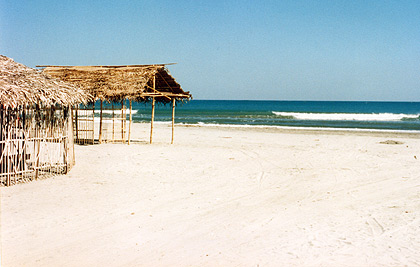
A pair of huts along a beach facing Lingayen Gulf, Lingayen town
Because of its proximity to the South China Sea, Pangasinan has a number of good beaches and islands. The Hundred Islands have already been mentioned. Patar Beach, a white-sand beach and Santiago Island both in Bolinao, long and shallow Tondol Beach in Anda and the white sand beaches in the Western Pangasinan towns of Burgos, Bani and Agno are just some of these.
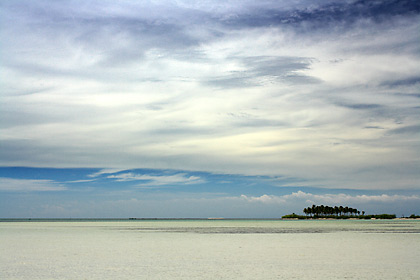
Long and shallow Tondol Beach in the island municipality of Anda
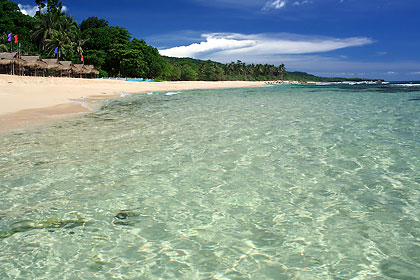
Patar Beach in Bolinao
But perhaps the most noteworthy are the beaches and islands of Dasol including the creamy white sand beaches of Tambobong, Balinmanok and Colibra Island. The waters off Dasol are pristine and excellent sites for snorkeling and diving perhaps because many parts of the town, especially those along the coast, are not easily accessible and have escaped hordes of visitors. Dasol’s potential as a tourist destination is only now being discovered. We remember reading a travel guide book a few years back (can’t remember if it’s Lonely Planet) that suggested Dasol as a better tourist spot compared to the Hundred Islands which it classified as “overrated.”
There are of course other natural attractions in the province including the Umbrella Rocks of Agno, the Antong Falls in Sison, the Tara waterfalls in Bolinao, the hot and cold springs in Mount Balungao, the Cacupangan Cave in Mabini and the Villacorta Caves in Villacorta. Historical attractions include the Bolinao Lighthouse, the Lingayen Gulf War Museum in the provincial capital Lingayen and many old churches.
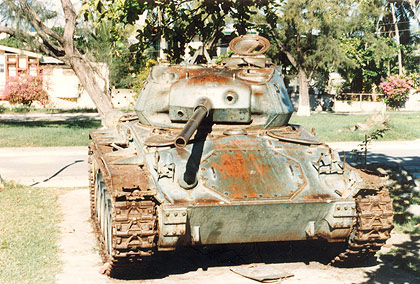
World War 2-era tank in the Lingayen Capitol grounds. The Lingayen Gulf was the site of the main American landings in Luzon in 1945.
And the food… Boneless bangus or deboned milkfish is probably the most popular food in Pangasinan. It is either marinated in vinegar or smoked before being fried or grilled. Whenever we are in Dagupan City, the milkfish capital of the Philippines, we make it a point to eat at one of the many restaurants serving boneless bangus and different types of sea food. For sweets one can try tupig, a kind of suman or rice cake that we often encounter from roadside vendors in Carmen, Rosales on the way to Baguio City and, recently, in Tarlac City as well.
We’ve explored different parts of the province over the years, yet there are other places in Pangasinan still waiting to be visited, especially Timapog na Bato, Cabongaoan Beach and other beaches in nearby Burgos and Bani and the Umbrella Rocks in Agno. Stay tuned…

